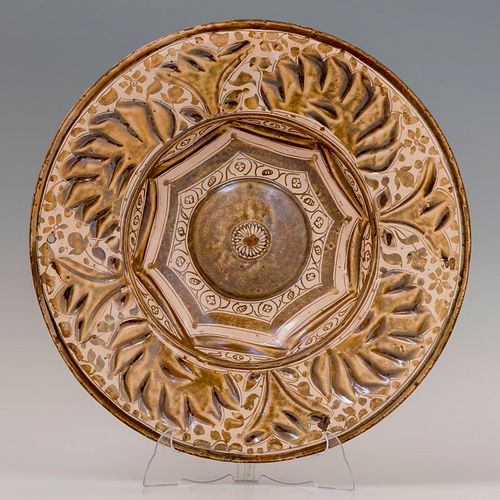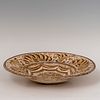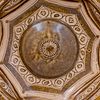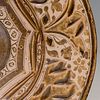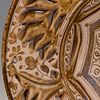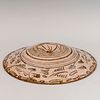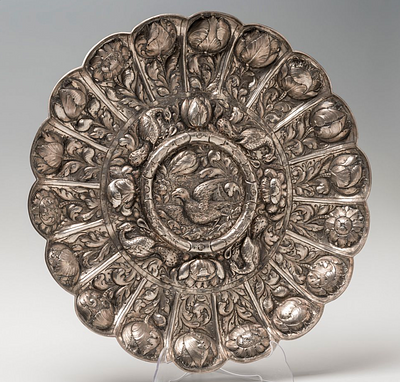Manises plate, XVI century. Glazed ceramic and metallic luster.
Lot 101
About Seller
Setdart Auction House
Carrer Aragó 346
Barcelona
Spain
Setdart Subastas was born in 2004 and is currently the first online art auction in Spain with solidity, prestige and reliability guaranteed by our more than 60,000 users. Setdart has a young, dynamic and enterprising team ready to successfully manage the purchase and sale of art works through custom...Read more
Categories
Estimate:
EUR€3,000 - EUR€3,500
$3,225.81 - $3,763.44
Absentee vs Live bid
Two ways to bid:
- Leave a max absentee bid and the platform will bid on your behalf up to your maximum bid during the live auction.
- Bid live during the auction and your bids will be submitted real-time to the auctioneer.
Bid Increments
| Price | Bid Increment |
|---|---|
| EUR€0 | EUR€10 |
| EUR€200 | EUR€25 |
| EUR€500 | EUR€50 |
| EUR€1,000 | EUR€100 |
| EUR€3,000 | EUR€200 |
| EUR€5,000 | EUR€500 |
| EUR€10,000 | EUR€1,000 |
| EUR€20,000 | EUR€2,000 |
| EUR€50,000 | EUR€5,000 |
About Auction
By Setdart Auction House
Jul 13, 2021
Set Reminder
2021-07-13 07:00:00
2021-07-13 07:00:00
America/New_York
Bidsquare
Bidsquare : DECORATIVE ARTS XV-XIX
https://www.bidsquare.com/auctions/setdart-auction-house/decorative-arts-xv-xix-7201
Setdart Auction House sofia@setdart.com
Setdart Auction House sofia@setdart.com
- Lot Description
Manises plate, XVI century. Glazed ceramic and metallic luster. Measures: 6,5 x 39,4 cm. The ceramics of metallic luster will be the great art of the Nasrid period, although it was born in the Spain of the Almohad period, between the second half of the XII century and the first half of the XIII century. It is a technique of Persian origin, the first documents referring to it being found in the year 1066, although no examples prior to the 12th century have come down to us. It is a glazed ceramic, that is, with a bath of white glaze, very pure in the best examples, which is fired in the kiln. On it, already cold, it is decorated with a pigment composed of five basic ingredients: copper, silver, sulfur, almazarrón (iron oxide) and vinegar. The final tone will depend on the proportion of these components, resulting more golden if it has a greater amount of silver, and more reddish if copper predominates. Finally, the piece is fired a second time at 650ºC, in a reducing atmosphere, to fix the decoration. Once the piece is fired, the decoration is black, so it has to be burnished to obtain the final shiny metallic gold tone. During the Nasrid period, between the 13th and 15th centuries, in the luster pieces we will see all the ornamental repertoire of Hispano-Muslim ceramics: hand of Fatima, "ohm", knot, ataurique, epigraphy, vegetal motifs, scales, imbricated decorations, etc., always with compositions that fill the entire space, with a certain character of "horror vacui". As we see in this piece, in the following centuries the style will continue in Christian territory, maintaining the dense compositions and the linear, vegetal and geometric motifs.
- Shipping Info
-
In-house shipping available. Please inquire at admin@setdart.com.
-
- Buyer's Premium



 EUR
EUR CAD
CAD AUD
AUD GBP
GBP MXN
MXN HKD
HKD CNY
CNY MYR
MYR SEK
SEK SGD
SGD CHF
CHF THB
THB